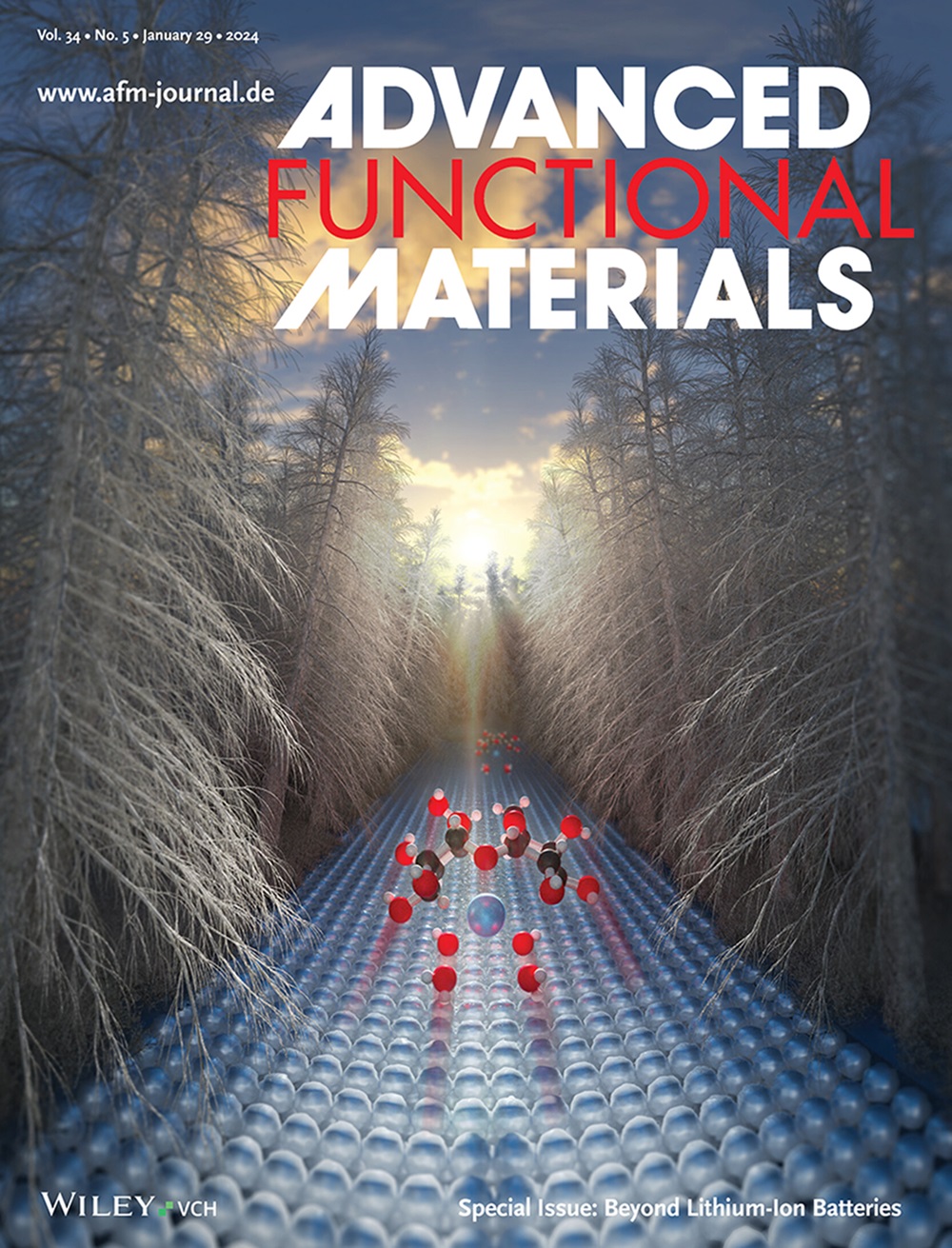Black Phosphorus Self‐Catalyzed In Situ Interfacial Cross‐Linking Reactions Enabling Low‐Temperature Carbon Coating for High‐Stable and High‐Capacity Lithium Storage
IF 18.5
1区 材料科学
Q1 CHEMISTRY, MULTIDISCIPLINARY
引用次数: 0
Abstract
Black phosphorus (BP), a promising high‐capacity anode material for lithium‐ion batteries, faces critical challenges of poor electrical conductivity and severe electrode pulverization. Traditional carbon coating strategies are often conducted under high‐temperature (over 700 °C) or oxidative conditions that are not suitable for BP due to its low sublimation temperature (400 °C) and high oxidation susceptibility in air/moisture. In this work, by utilizing self‐catalysis effect of BP, we propose a low‐temperature carbon coating strategy for BP anodes toward high‐stable and high‐capacity lithium storage. The strategy is realized by a two‐step approach including interfacial electrostatic assembly of carbon quantum dots (CQDs) on BP nanosheets, followed by BP self‐catalyzed in situ interfacial cross‐linking of CQDs, forming a continuous carbon layer on BP (BP@CL). DFT calculations reveal that BP self‐catalysis significantly reduces the energy barriers of CQDs cross‐linking reactions, while finite element simulations demonstrate that the carbon layer effectively mitigates lithiation stress of BP@CL (above 51% reduction). The optimized BP@CL composite anode exhibits exceptional cycling stability with 87.3% capacity retention after 500 cycles at 0.2 A g黑磷自催化原位界面交联反应,实现低温碳涂层用于高稳定和高容量锂存储
黑磷(BP)是一种极具发展前景的高容量锂离子电池负极材料,但其导电性差、电极粉化严重等问题面临严峻挑战。传统的碳涂层策略通常在高温(超过700°C)或氧化条件下进行,由于其低升华温度(400°C)和在空气/水分中的高氧化敏感性,这些条件不适合BP。在这项工作中,我们利用BP的自催化效应,提出了一种低温碳涂层策略,用于BP阳极的高稳定和高容量锂存储。该策略通过两步方法实现,包括碳量子点(CQDs)在BP纳米片上的界面静电组装,然后BP自催化CQDs的原位界面交联,在BP上形成连续的碳层(BP@CL)。DFT计算表明,BP自催化显著降低了CQDs交联反应的能垒,而有限元模拟表明,碳层有效地减轻了BP@CL的锂化应力(降低51%以上)。优化后的BP@CL复合阳极表现出优异的循环稳定性,在0.2 A g−1下循环500次后,其容量保持率为87.3%,明显优于原始BP。所开发的具有BP自催化作用的温和碳涂层方法为设计先进的BP基储能电极提供了新的机会。
本文章由计算机程序翻译,如有差异,请以英文原文为准。
求助全文
约1分钟内获得全文
求助全文
来源期刊

Advanced Functional Materials
工程技术-材料科学:综合
CiteScore
29.50
自引率
4.20%
发文量
2086
审稿时长
2.1 months
期刊介绍:
Firmly established as a top-tier materials science journal, Advanced Functional Materials reports breakthrough research in all aspects of materials science, including nanotechnology, chemistry, physics, and biology every week.
Advanced Functional Materials is known for its rapid and fair peer review, quality content, and high impact, making it the first choice of the international materials science community.
 求助内容:
求助内容: 应助结果提醒方式:
应助结果提醒方式:


